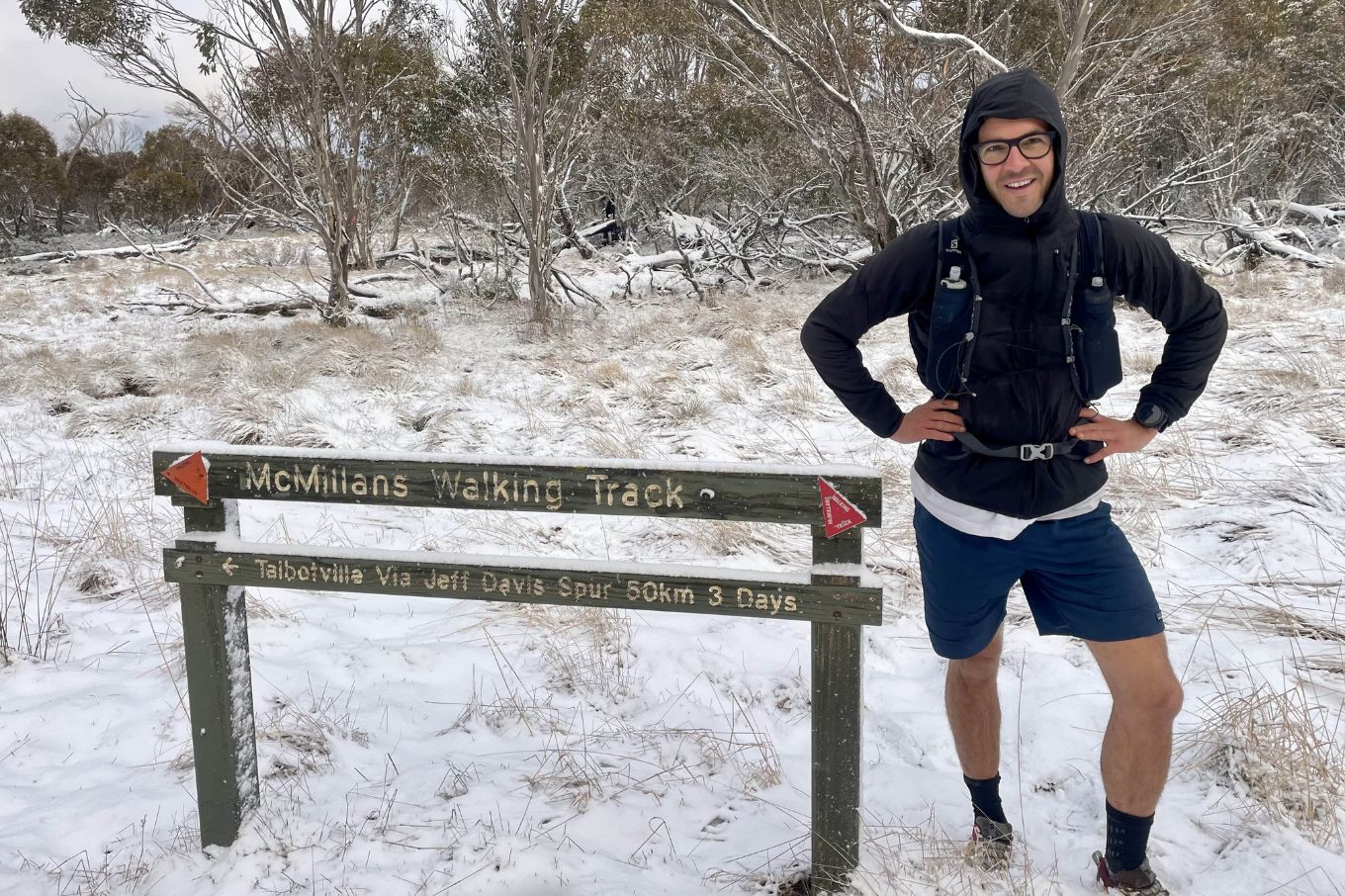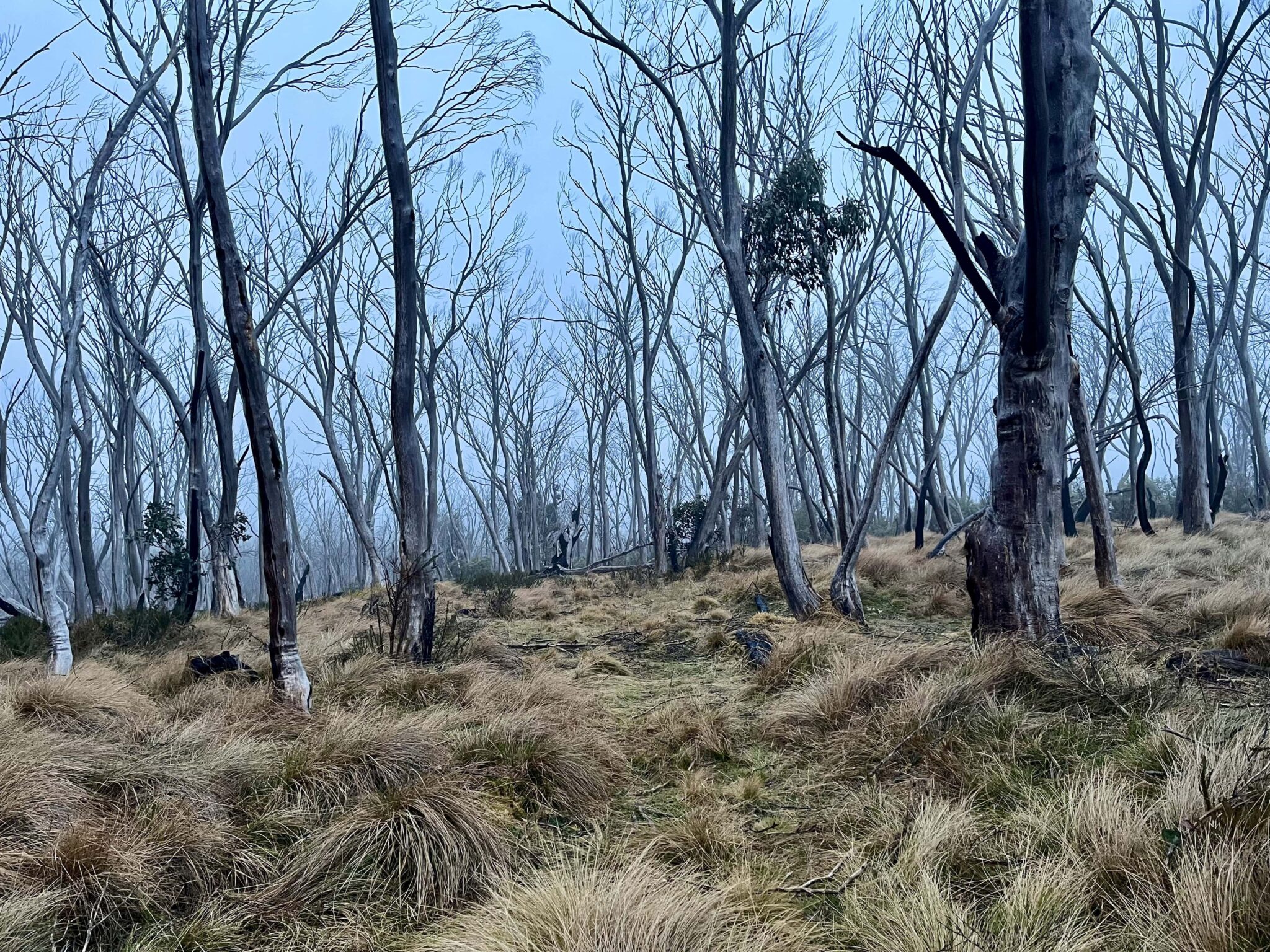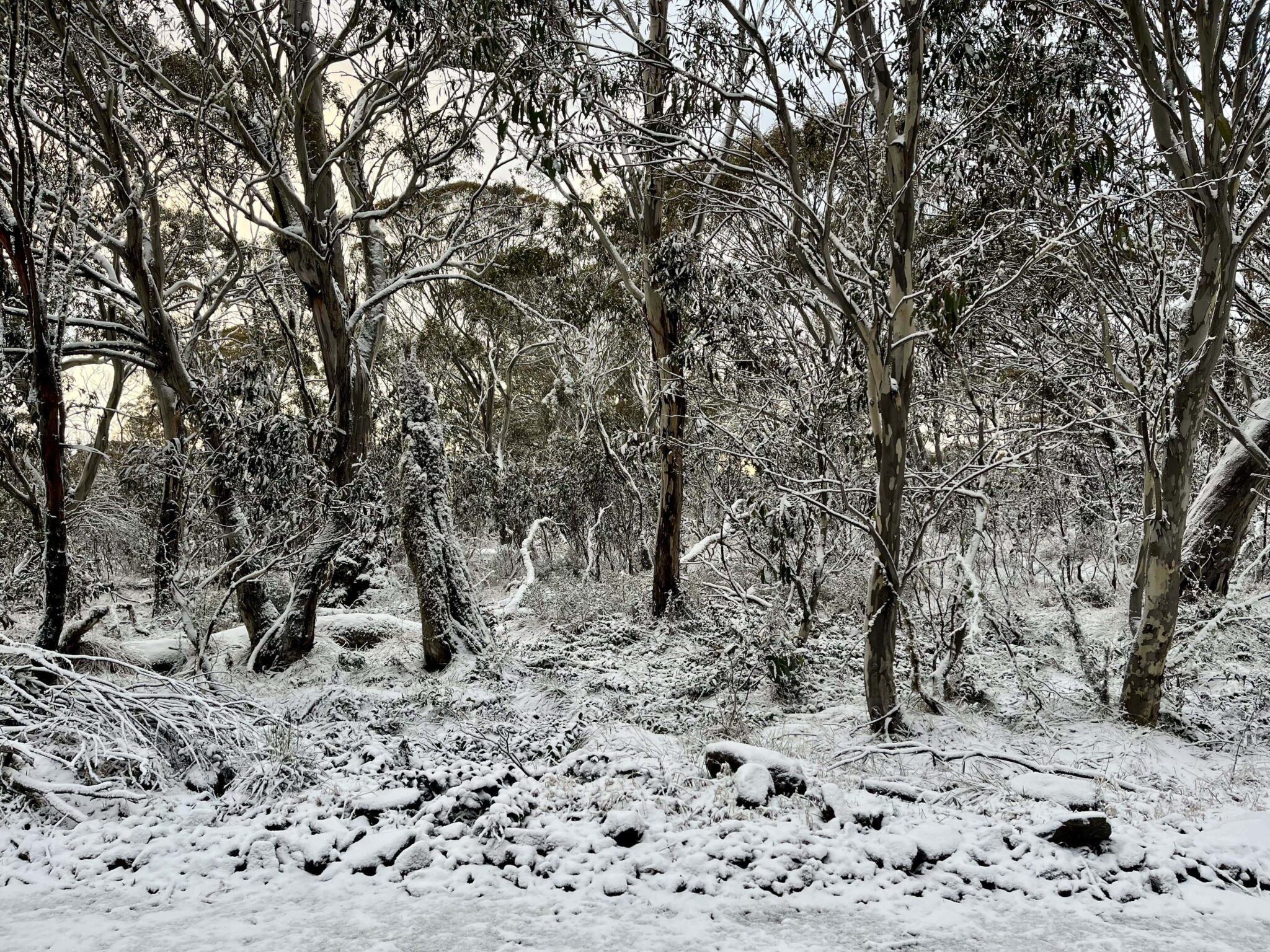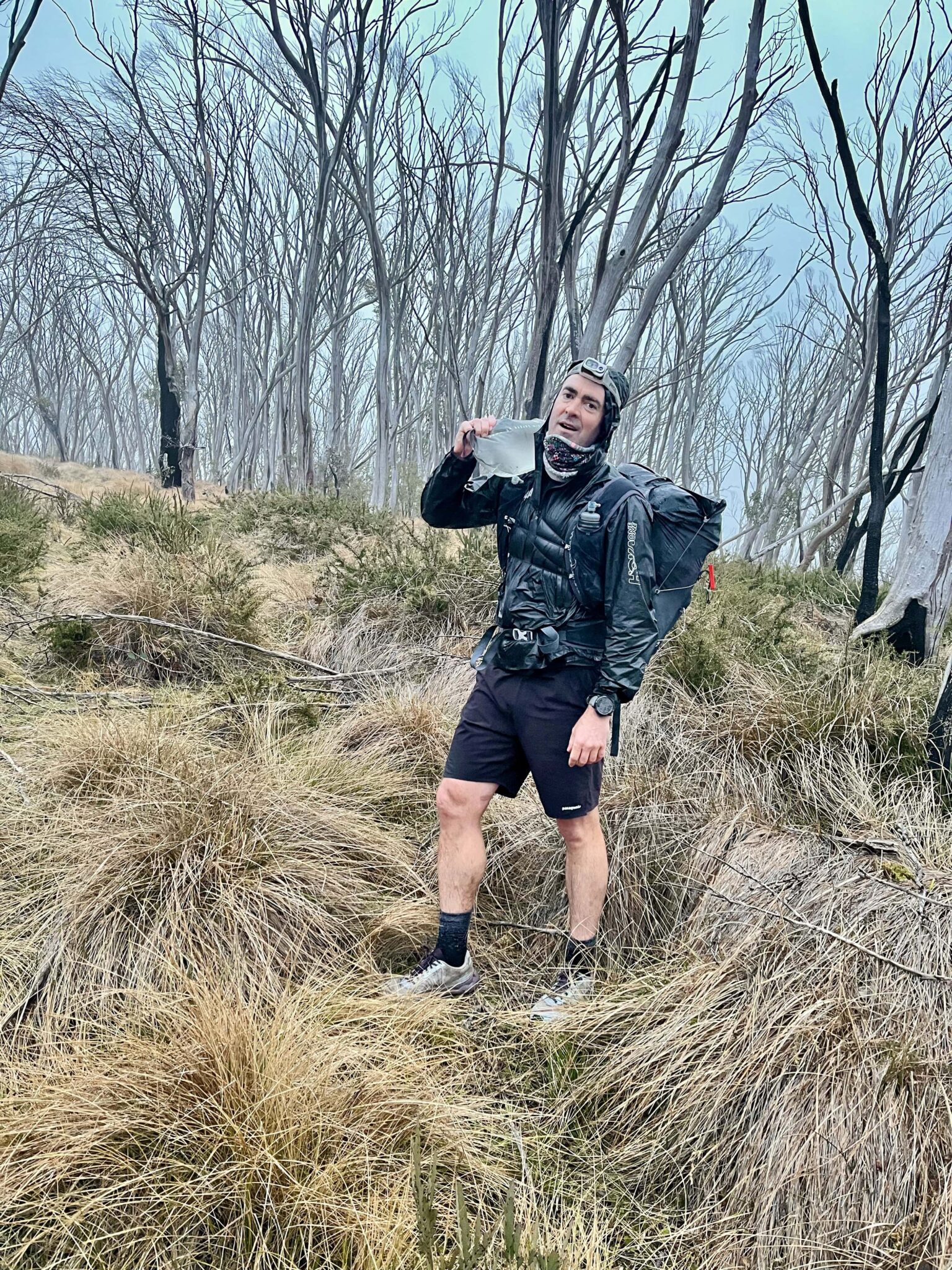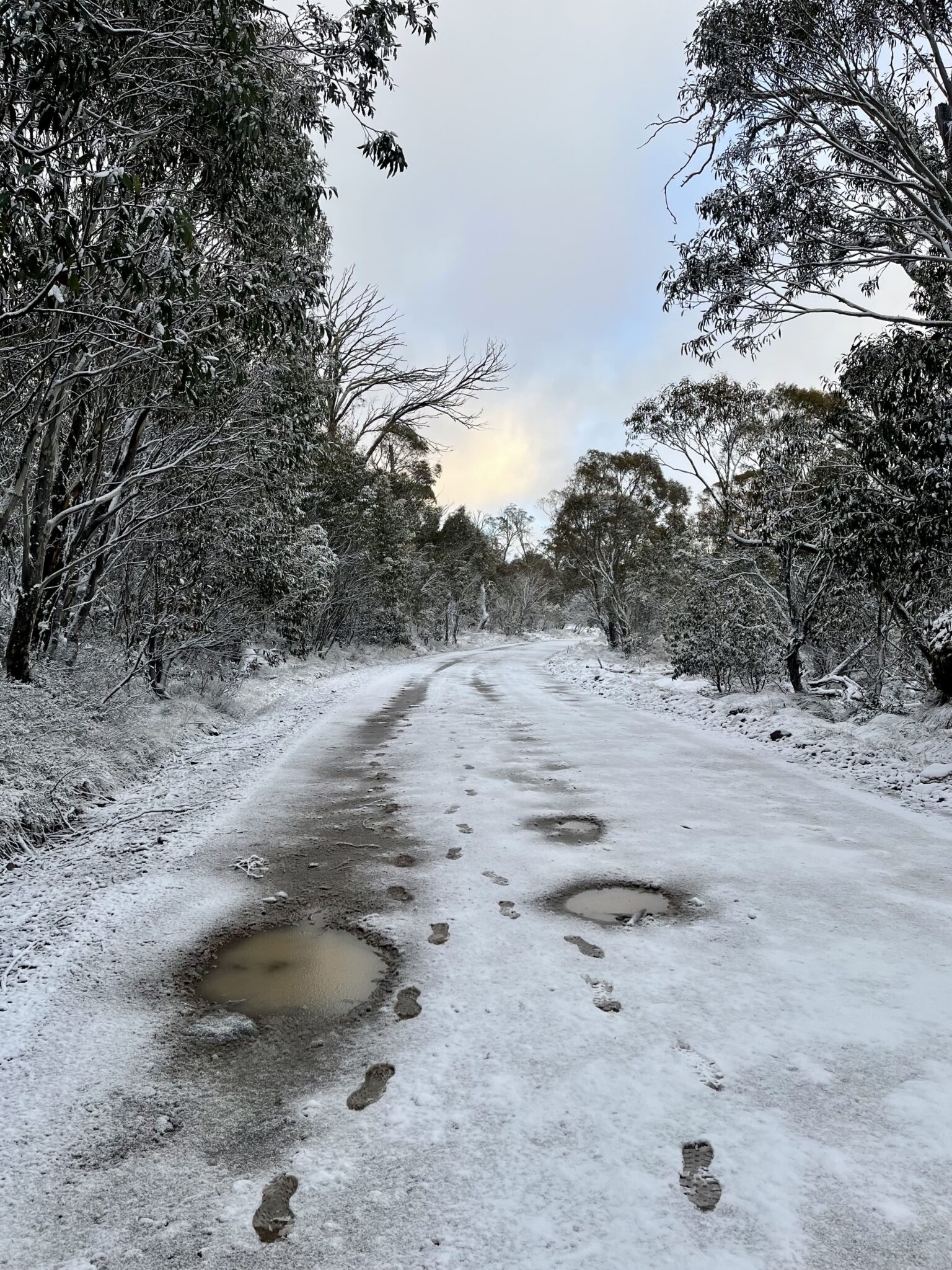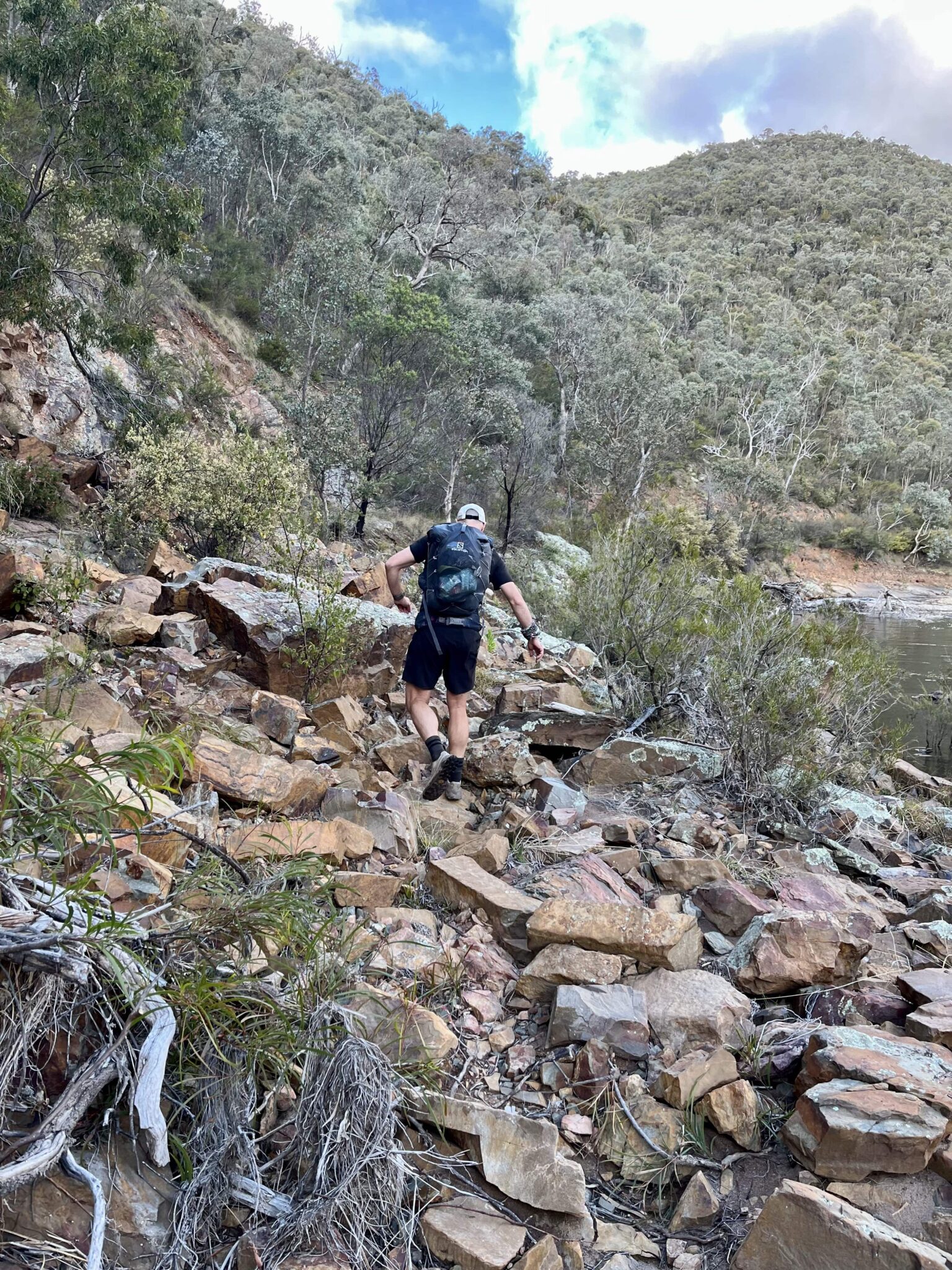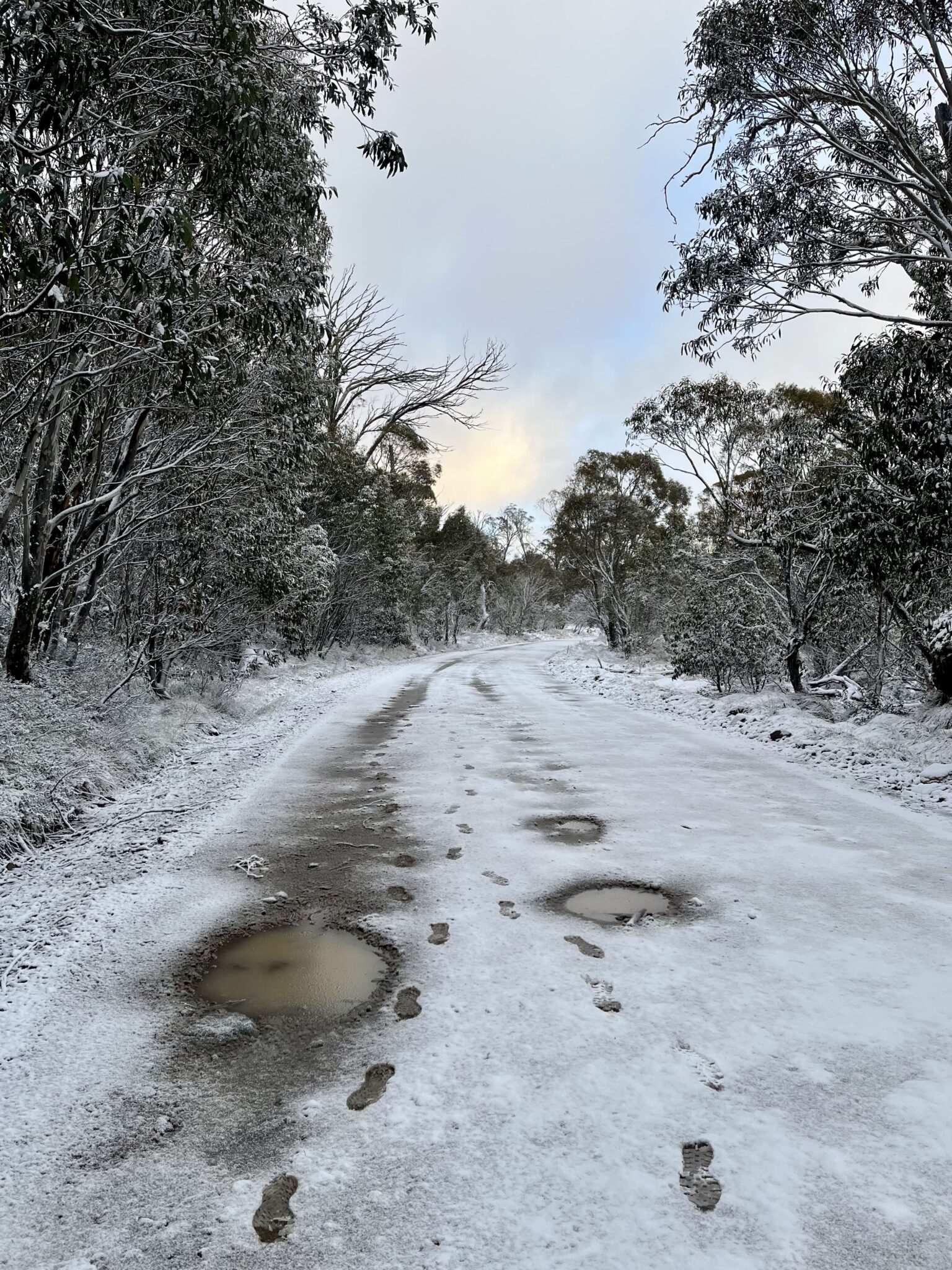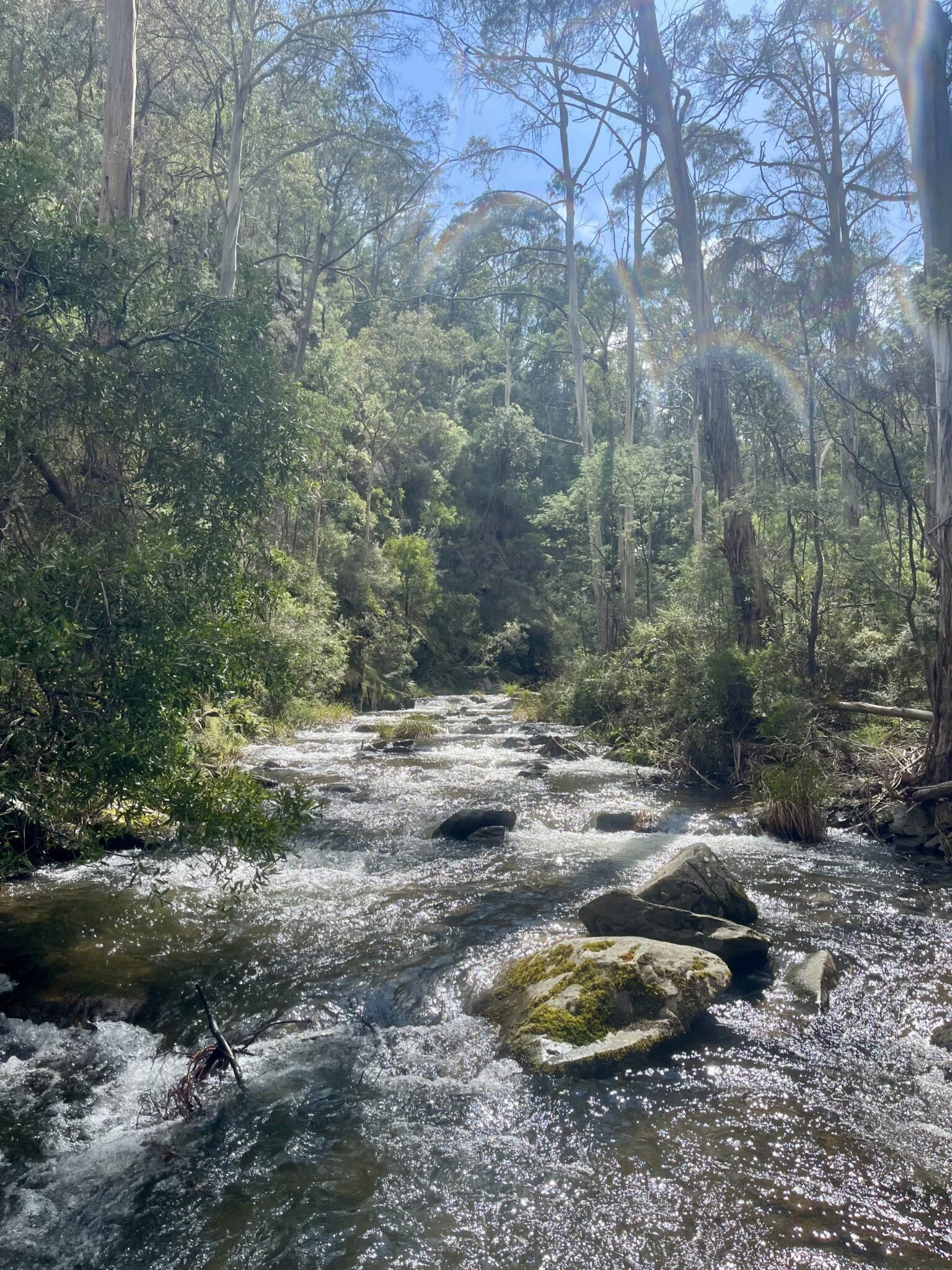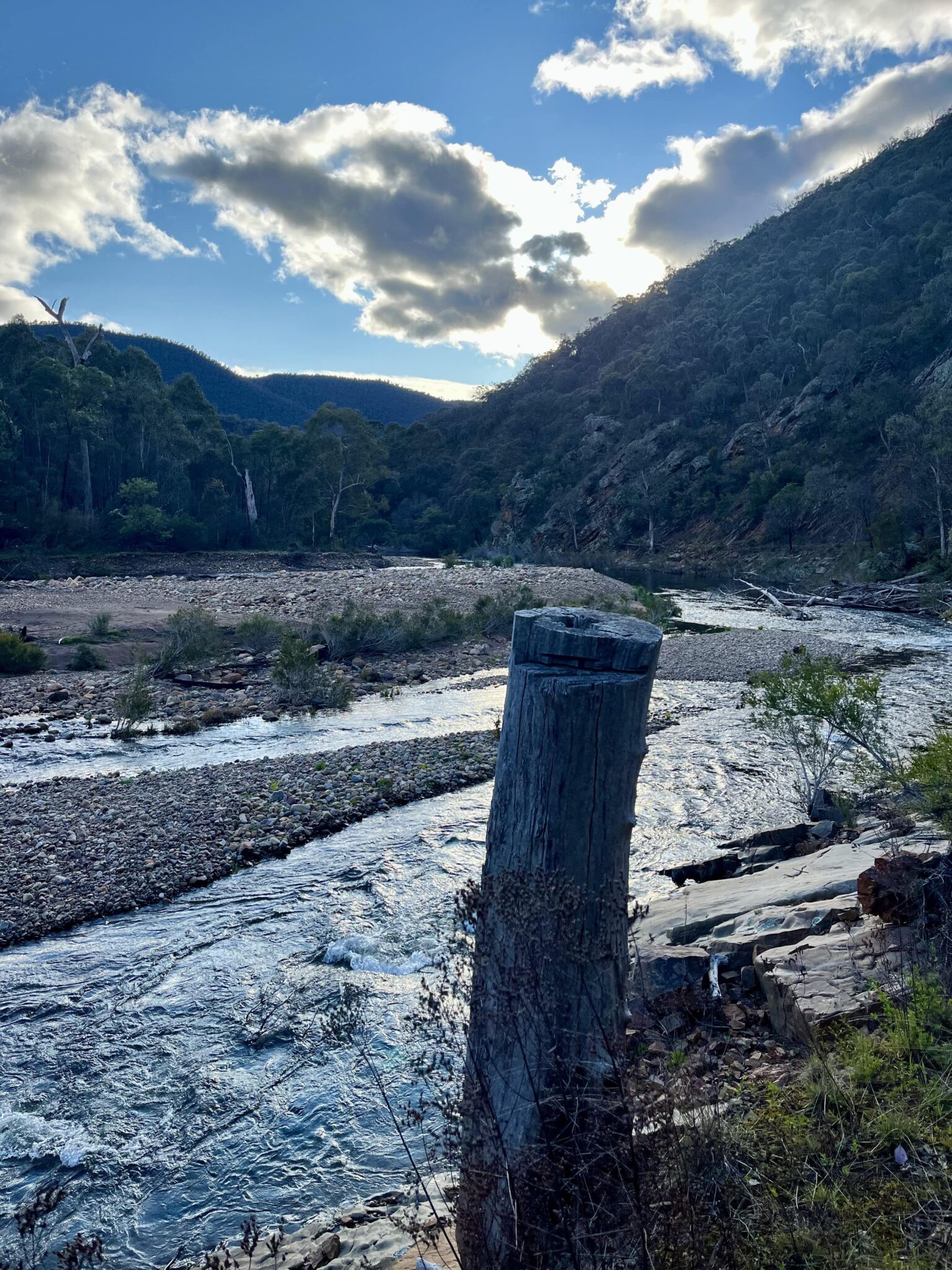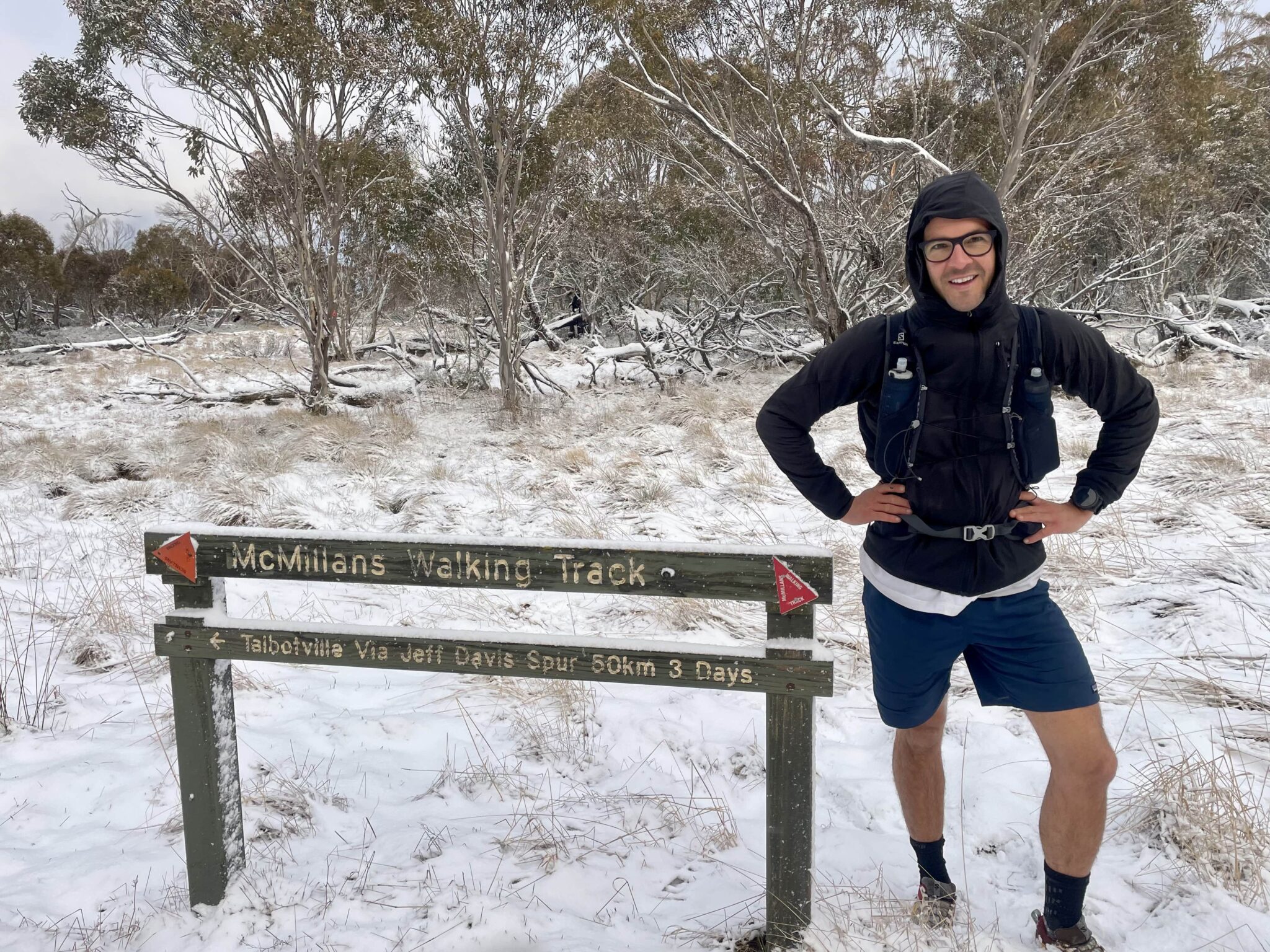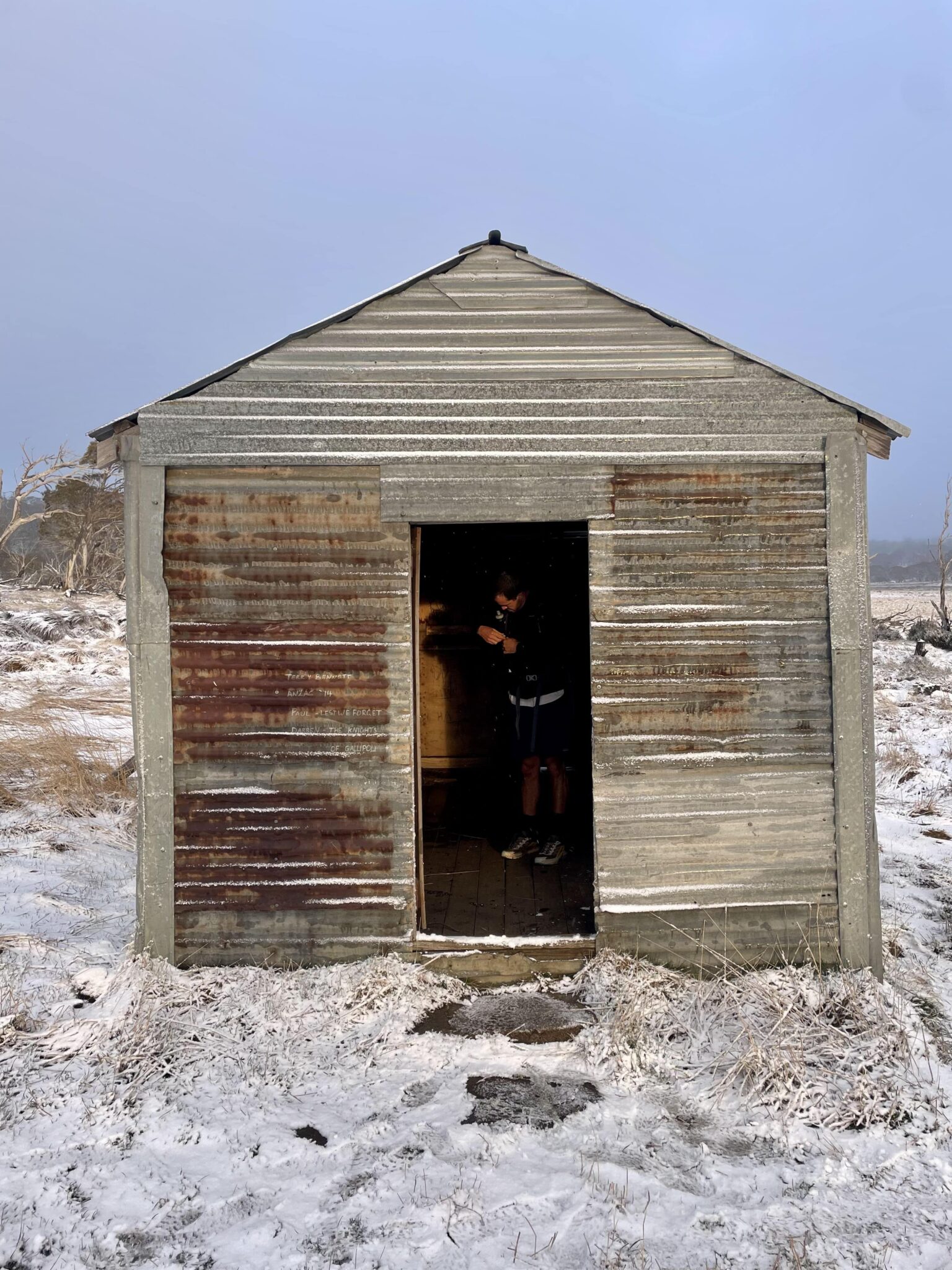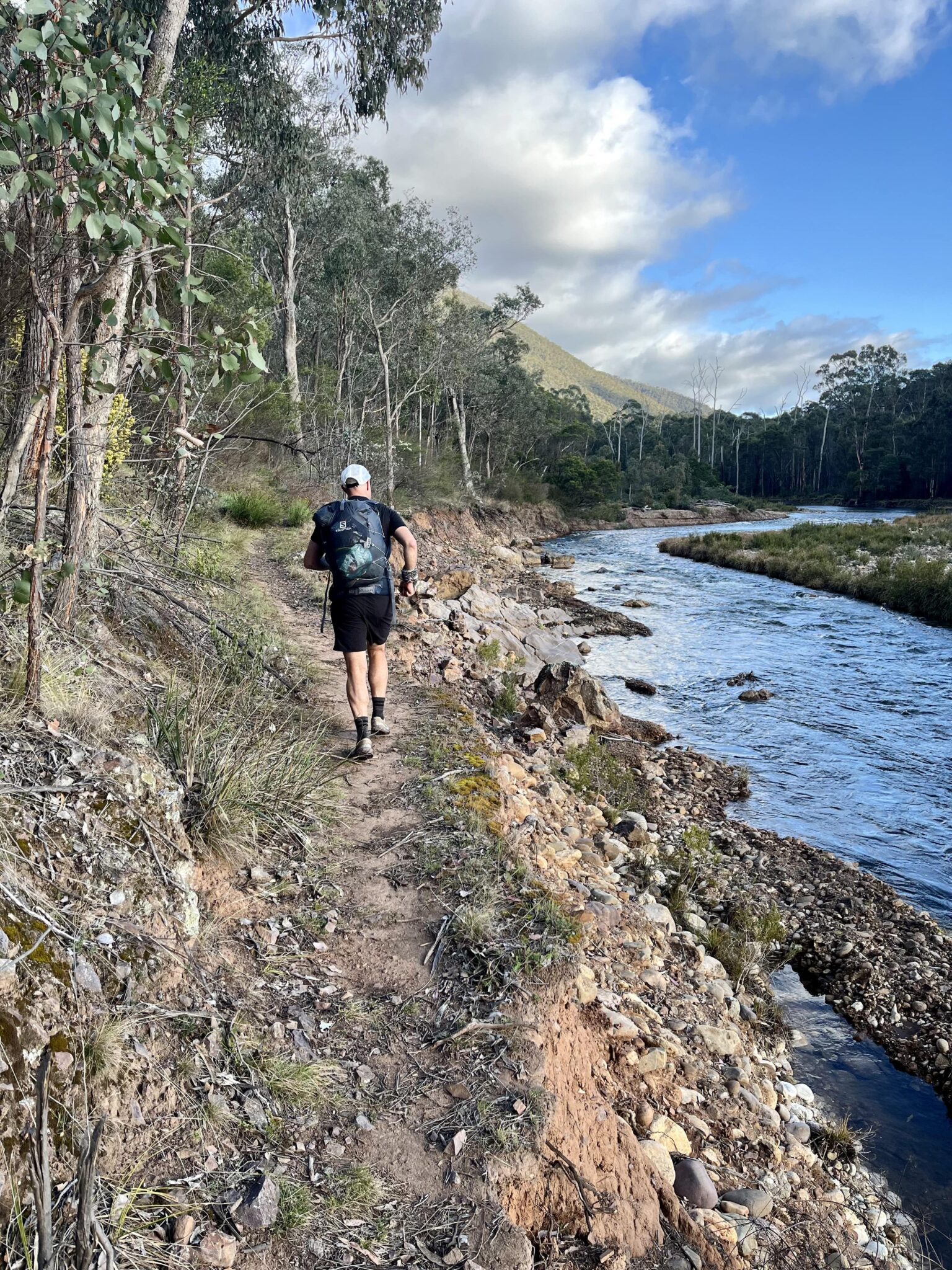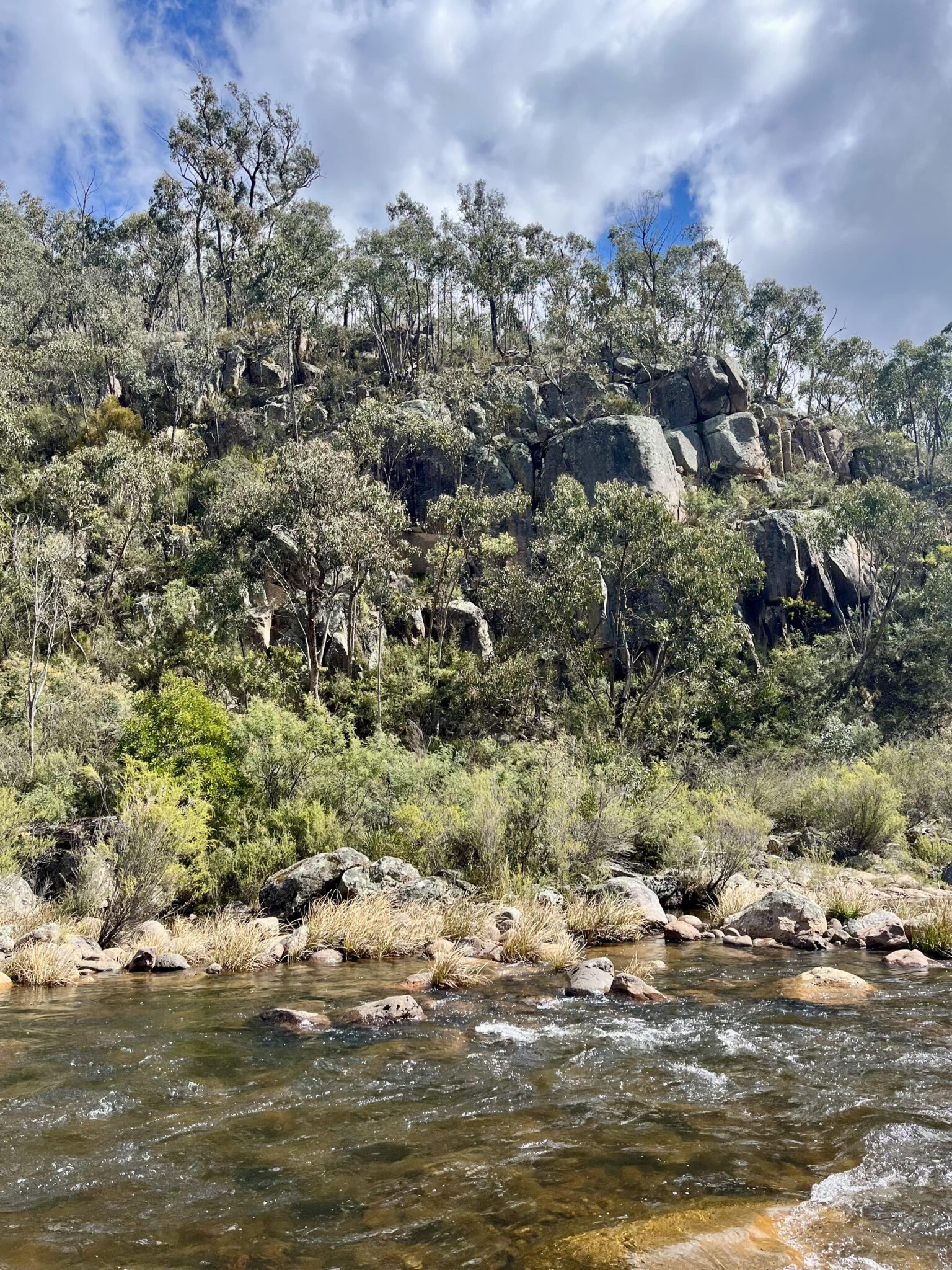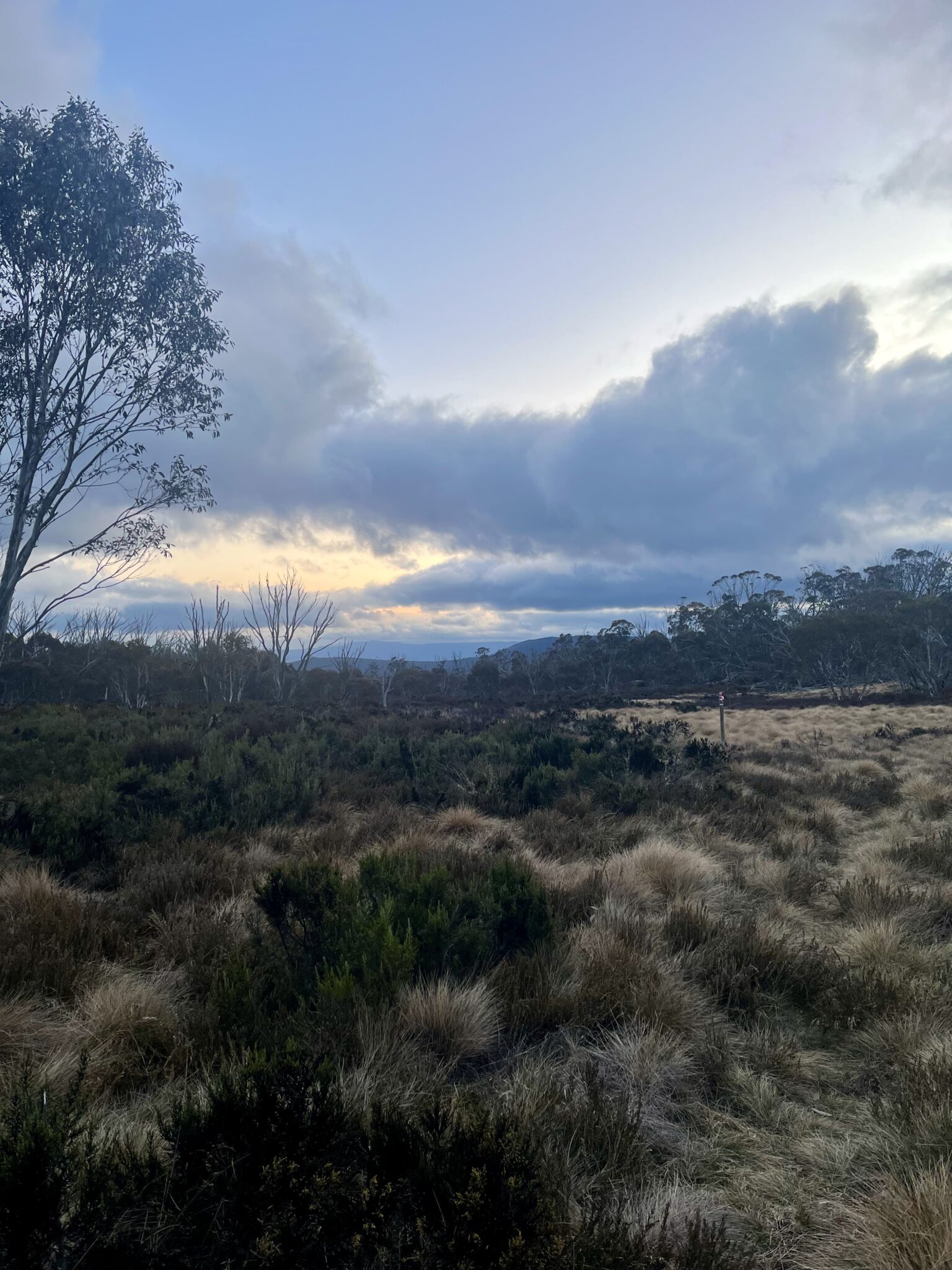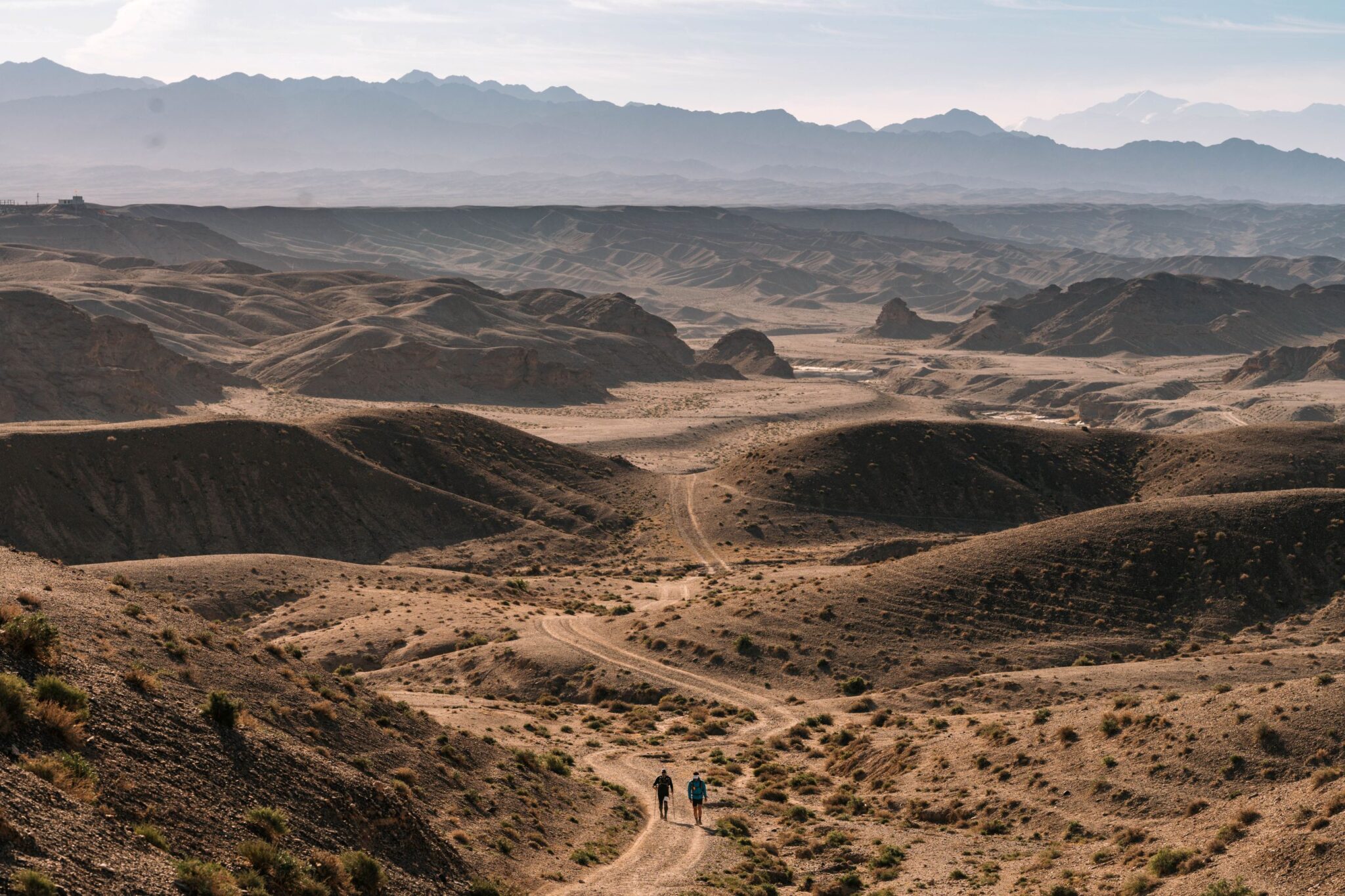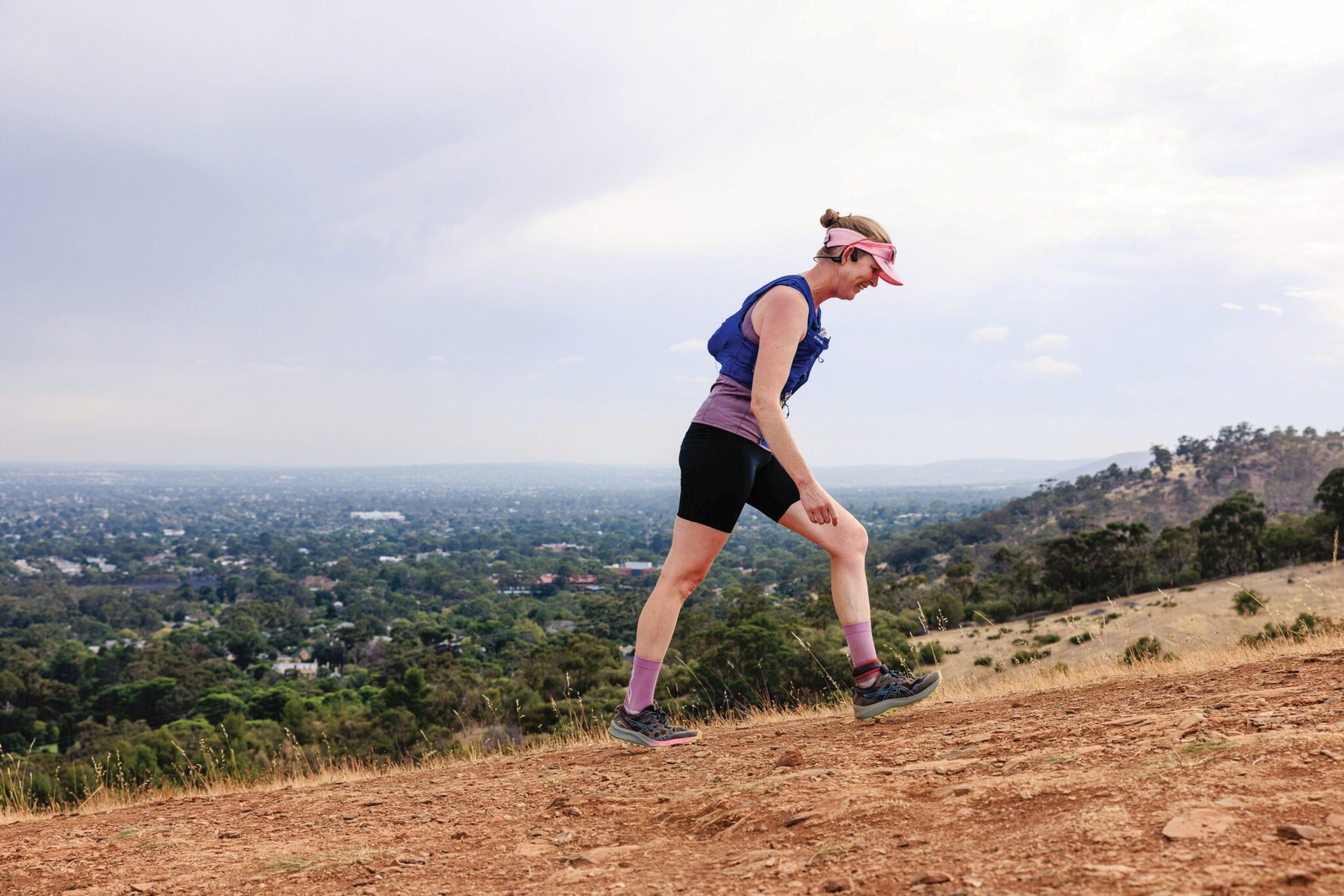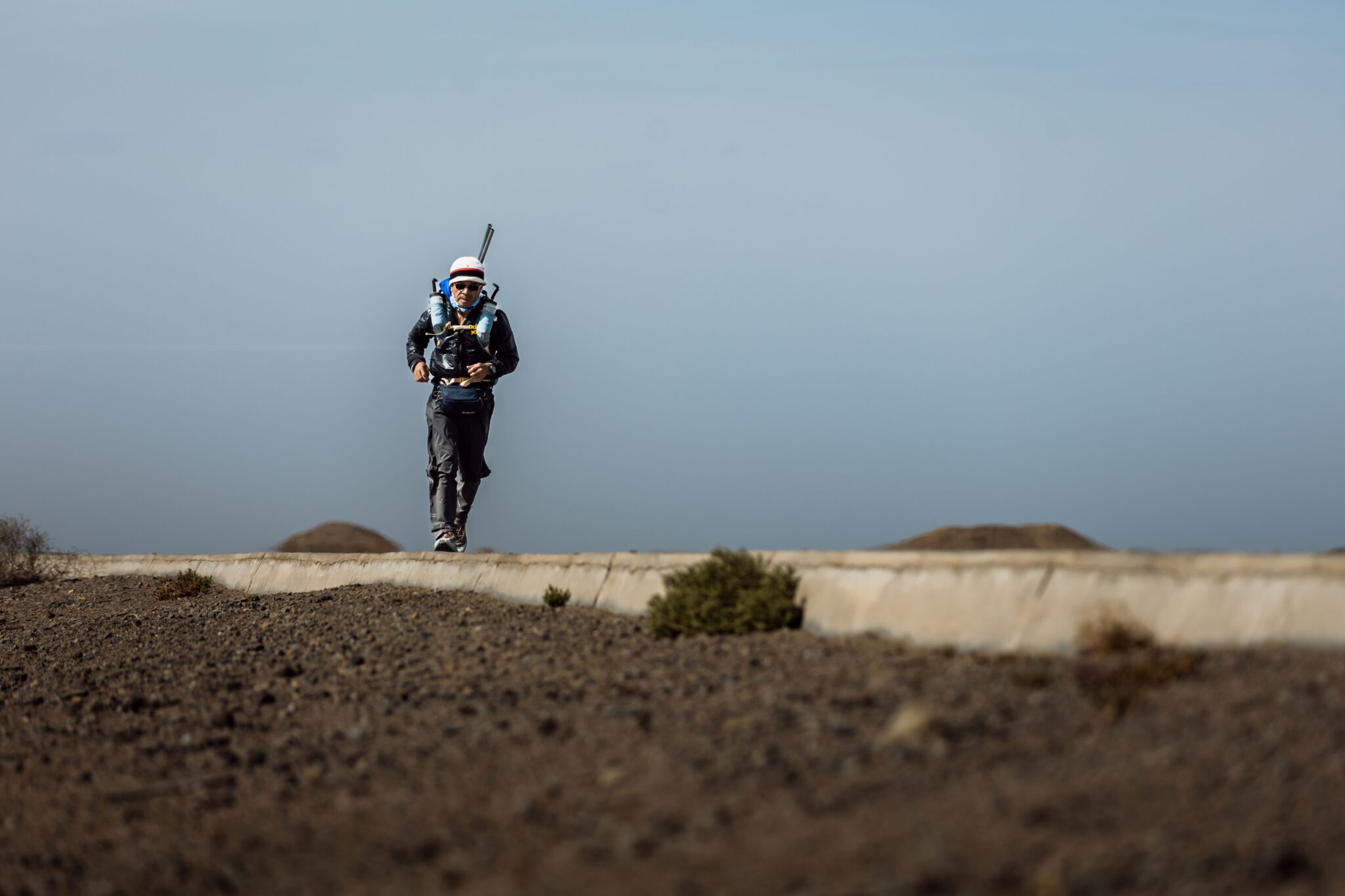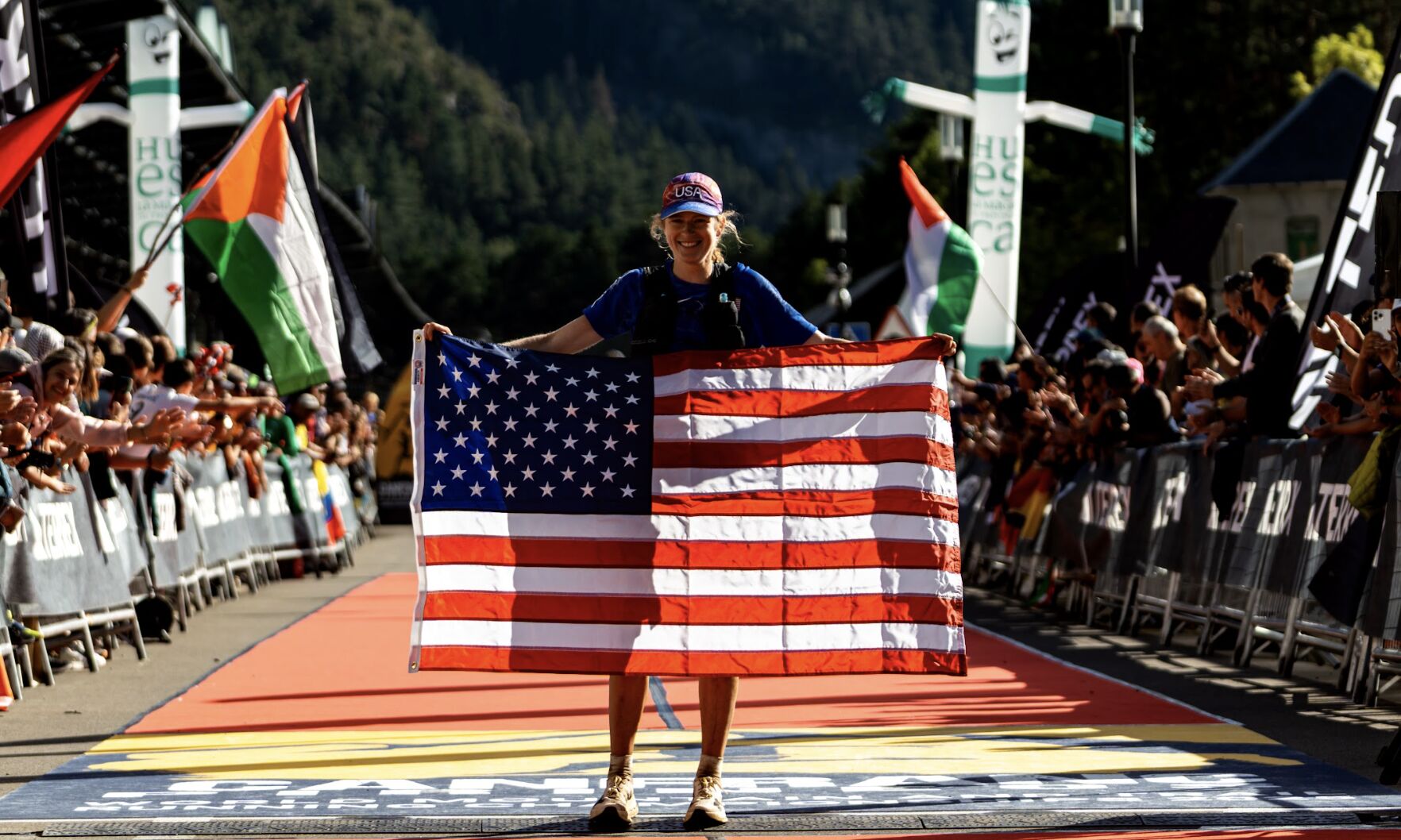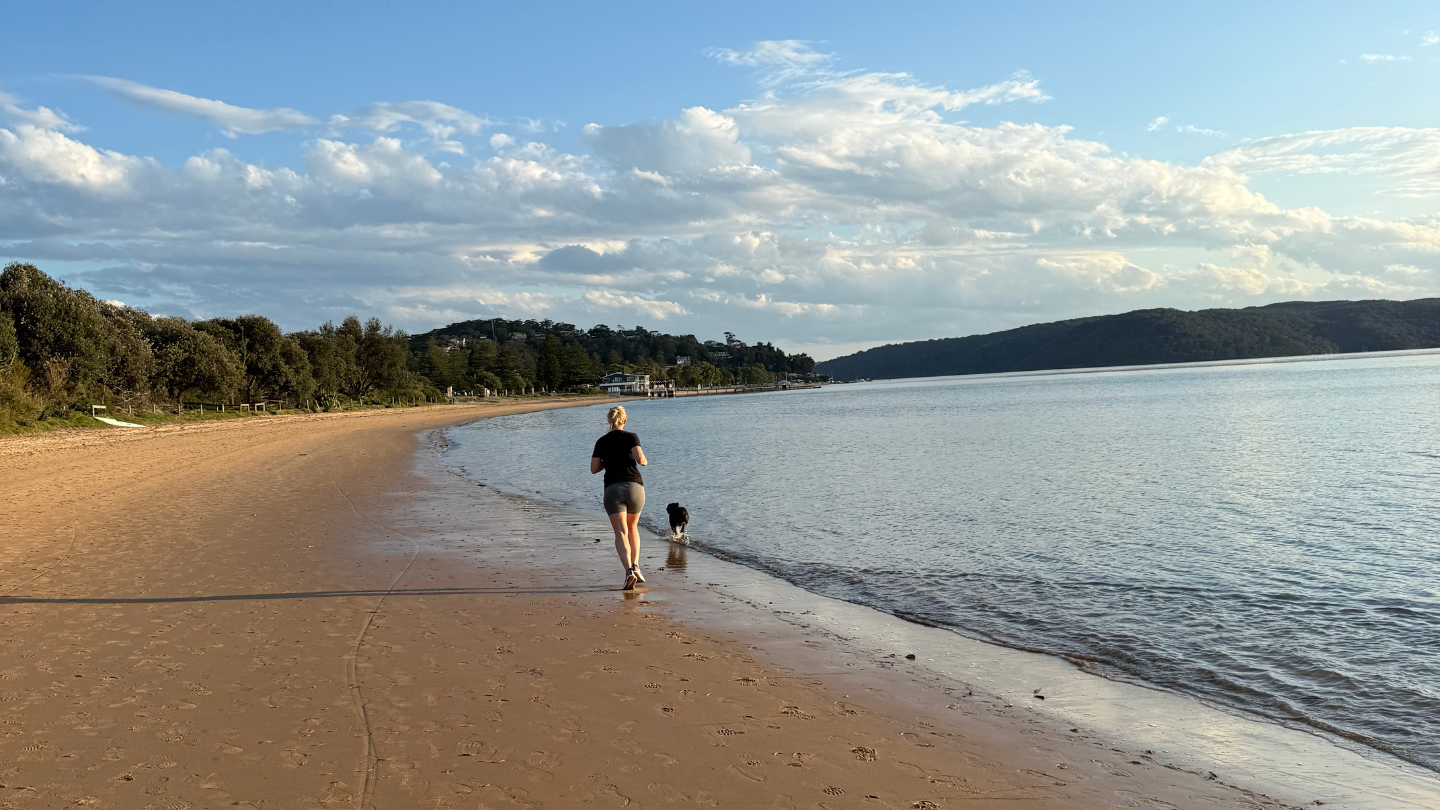What It Means to Feel Alive – Fastpacking McMillans Walking Track
Photography by Jack Garner, Julian Bowring.
This article appeared in Edition 55 of Trail Run Magazine 2025.
Key Details
- Route: McMillans Walking Track, Victoria, Australia
- Distance: 220km
- Duration: 4 days (unsupported)
- Vertical Gain: Approx. 9,600m
- Calories Burned: 20,403 total
- Fastest Known Time: Previous record beaten by 43 hours
- Best For: Endurance trail runners, fastpackers, and anyone seeking type-2 fun in remote alpine terrain
- Highlights:
- 23 river crossings
- Heavy snowfall, extreme windchill, minimal sleep
- Stunning solitude and untamed beauty
Last year, Jack Garner and Julian Bowring embarked on a bold quest to set a fastest known time (FKT) on the rugged McMillans Walking Track. Starting in Cobungra, deep in the Victorian Alps, their journey tested endurance, navigation, and resilience across remote terrain steeped in gold rush history and wild, untamed beauty.
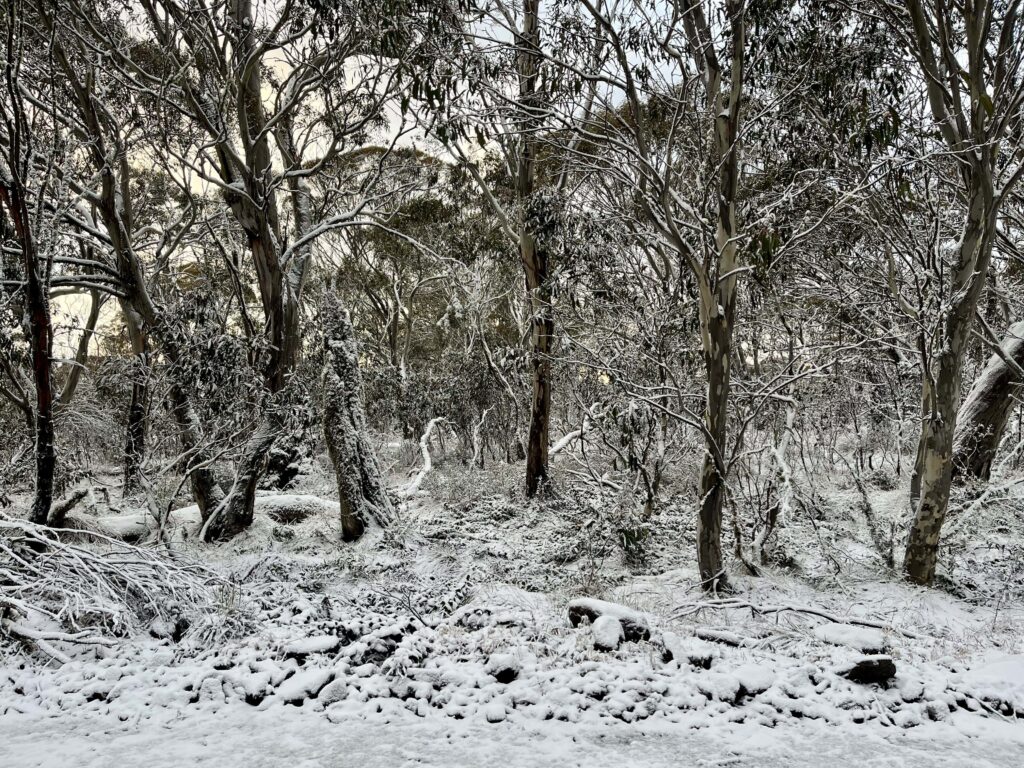
On the afternoon of 20 September, 2024 Julian Bowring and I set out from Cobungra, a blip in the Victorian Alps, to attempt something absurd: to cover the entire 220kms of the McMillans Walking Track, unsupported, in record time.
The track, a jagged scar across Victoria’s high country, was hacked out of the wilderness in 1864 by Angus McMillan to link goldfields during the manic gold rush. Since then, the elements have mostly reclaimed it: crumbling trails, overgrown riverbanks, and valleys where nature has quietly repossessed what was once hers.
A century and a half ago, Angus McMillan carved this path in search of gold; now, it was us chasing something equally elusive – a moment of clarity in the chaos of modern life.
The McMillans isn’t for the casual hiker. It’s designated a Grade 5 track, the harshest rating on a scale that maxes out at ‘Only Attempt This If You’re Ready to Suffer’. For most people, it’s a two-week slog through the Australian backcountry so it was a mad dash for us: three and a half days with just enough gear, food, and self-reliance to get through.
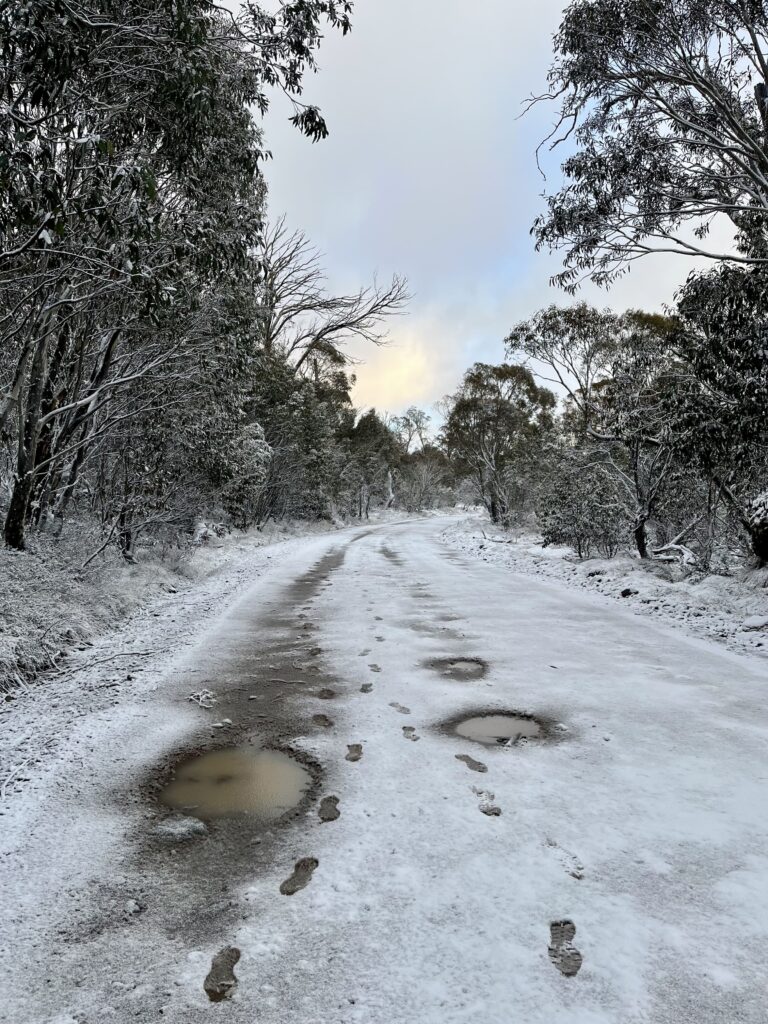
Our packs, each a burdensome 13kgs, were minimal but non-negotiable: bivvies, stoves, high-calorie snacks, gear to stave off hypothermia, and an EPIRB for emergencies. We planned one food drop at Breakfast Creek and carried everything else on our backs. Every gram counted.
DAY 1 Friday, 20 September, 1.45pm
Cobungra to Dargo High Plains / 27.14km / 1330m vertical gain / 2917 calories burnt / 5 hours 10 minutes
That first day, the Dargo River set the tone. After a few hours of relatively smooth going, we dropped 500m in under 2km along the Mayford Track, down into the valley and over the Dargo River. The valley was dark and cold, and by the time we filled ‘baby’, a four-litre water bladder, and began the slow climb out, it started to rain and then snow. The snow came first, soft but relentless, blurring the edges of our world and muffling our footsteps.
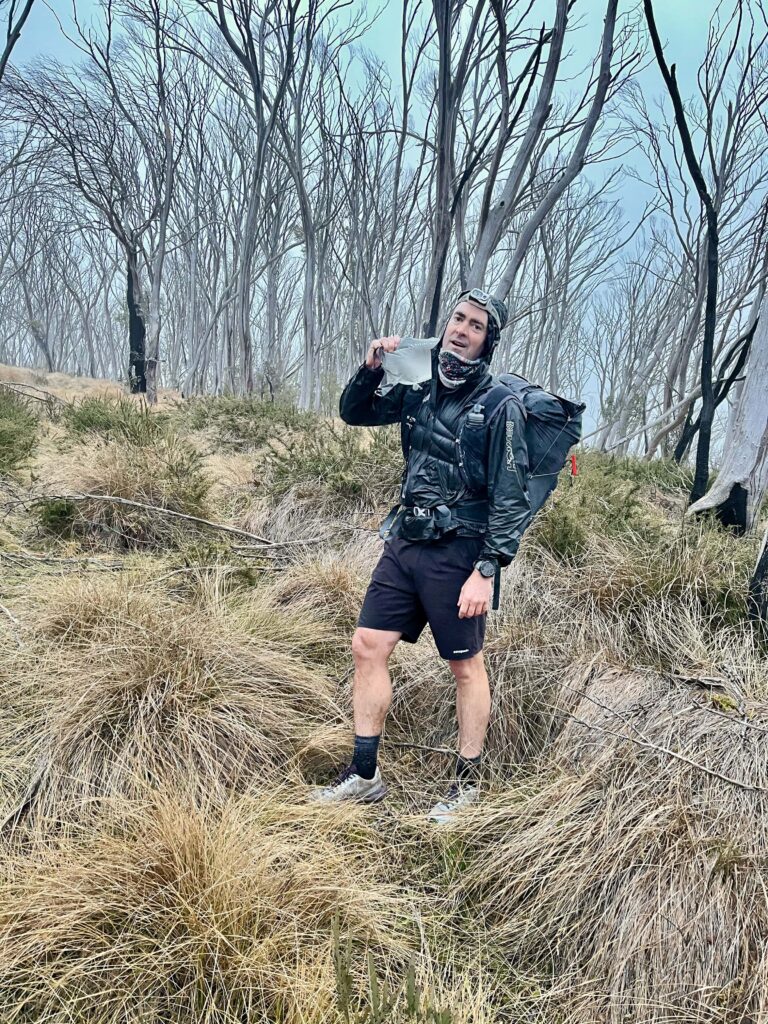
Then the wind followed, sharp as glass, clawing through our wet clothes. When we finally reached Lankey Plain Hut, we collapsed into our sleeping bags, shivering through a miserable -4°C night with 65km per hour winds, half-believing that this wasn’t such a great idea.
DAY 2 Saturday, 21 September, 6.26am
Dargo High Plains to Moroka River / 64km / 1675m vertical gain / 5015 calories burnt / 13 hours 7 minutes
Day two tested us in ways we hadn’t anticipated. The first section of the trail off the Dargo High Plains Road isn’t marked, and with fresh snow covering the trail, our progress was slow and laborious. We then found ourselves following the Crooked River, with 23 crossings over several kilometres. Talbotville, an abandoned mining campsite, shimmered like an oasis in a desert, a cruel reminder that we had no time to stop and appreciate it. By nightfall, we were camped near the Moroka River, tired and sore but content that another day was completed.
There’s an honesty to suffering like this. It strips away the noise of daily life, the constant hum of obligations and trivialities. You’re left with only what matters: the next step, the next breath. But the simplicity comes with a cost, an awareness of how fragile we are, how easily the mountains could swallow us whole.
DAY 3 Sunday, 22 September, 6.32am
Moroka River to Breakfast Creek / 71km / 2720m vertical gain / 6412 calories burnt / 18 hours 23 minutes
The third day began at 6.32am, and navigation was its own monster. The McMillans isn’t marked like a tourist-friendly trail. Gaia GPS on our phones became our lifeline, but the screen didn’t tell the whole story.
Where the map showed a clear line, the track itself had vanished into bush so thick we may as well have been hacking through it with machetes. The section along the Moroka River and up towards Moroka Rd is incredibly beautiful, remote, and slow-going. The first 30kms of the day took us 12 brutal hours, while the next 30kms passed in half the time. We learned quickly how indifferent the wilderness can be. You get sloppy, break an ankle or lose your way after dark, and suddenly, you’re in real trouble.
There’s a strange arrogance in believing you can bend nature to your will, that you can conquer terrain meant to humble and outlast you. But perhaps that’s the allure – to measure yourself against something ancient and unyielding, knowing full well that in the end, it’s not the mountain that submits, but you.
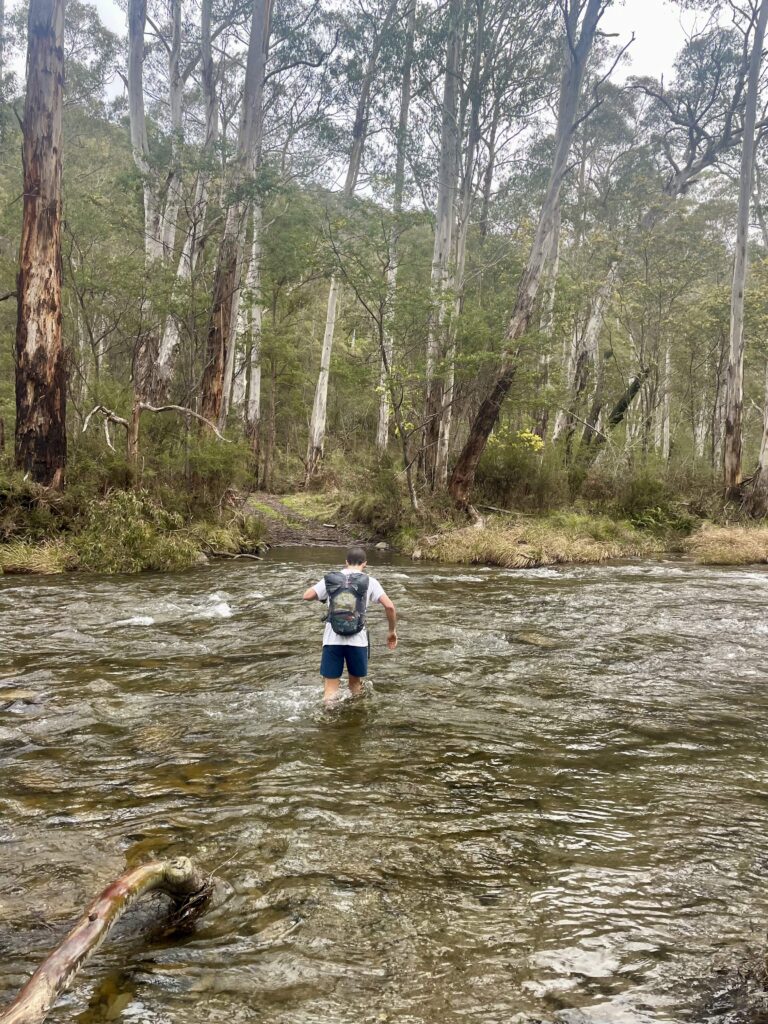
DAY 4 Monday, 23 September, 7.30am
Breakfast Creek to Woods Point / 75km / 3902m vertical gain / 6059 calories burnt / 16 hours 8 minutes
By day four, our bodies were wrecked. My shoulders felt like they’d been beaten with a hammer. My feet – swollen, blistered, bloodied – were a horror show. Food had become a chore. Energy gels and electrolyte powder, once saviours of the calorie-starved, tasted like punishment. Yet there were fleeting but undeniable moments when the trail rewarded us. Dawn breaking over the ridges. The quiet stillness of valleys most people never see.
We pushed through the final 75kms with only four hours of sleep, fueled by desperation and flat Coke. By 11:30pm, we stumbled into Woods Point, our bodies broken, our minds somewhere between euphoria and emptiness. We had crushed the previous record by 43 hours, yet our first instinct was to sit down and say nothing.
When it was over, the relief was muted, almost hollow. The trail had consumed us, demanded every ounce of our strength and more, but in its mercilessness, it also gave us something rare: a reminder of what it means to feel truly alive. Out there, where the world is reduced to its raw essentials, you find both your limits and the fleeting, fragile beauty of surpassing them.
This article appeared in Edition 55 of Trail Run Magazine 2025. Grab your copy here

